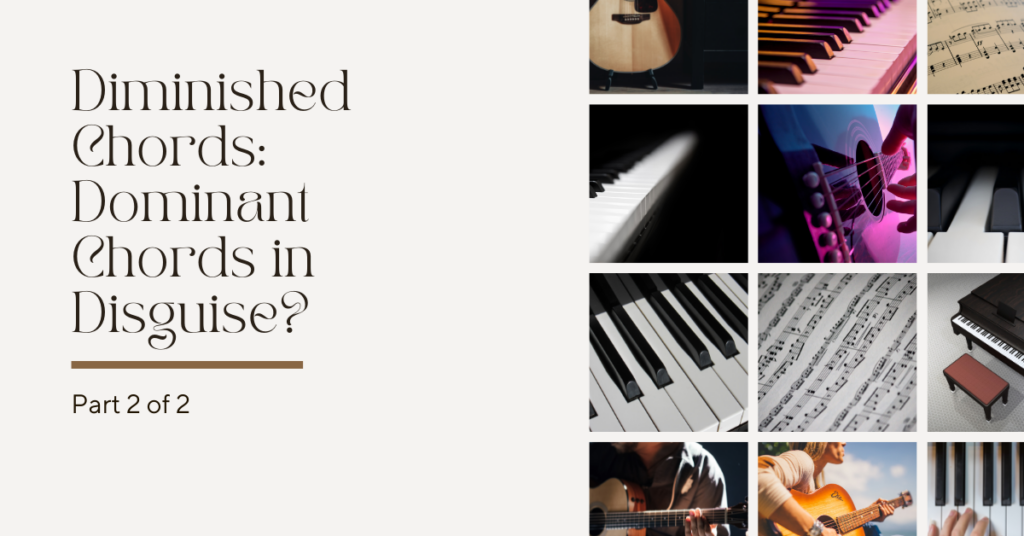Rootless chord voicings are an essential aspect of jazz and blues playing and usually thought of as an advanced concept. But the most challenging aspect of rootless chord voicings is simply the practice that they require. This is good news because you don’t need to know a lot of theory or a ton of tunes to get started with rootless chord voicings. These chords go a long way in helping you achieve the advanced, mature sound of the pros! And here, we’ll show you a simple step-by-step method for learning these chords AND getting them into your playing.
Rootless Chord Voicings: Step 1
We’re going to look at major, minor, and dominant seventh chords when constructing these rootless chord voicings. The first step is simply to know how to build all of these chords in root position, meaning that the root of the chord is the lowest note in the chord. Make sure to practice playing these major 7th, minor 7th, and dominant 7th chords in all 12 keys.

Rootless Chord Voicings: Step 2
In Step 2 we are going to invert these chords so that the 3rd or 7th is the lowest note of the chord, like so:

Step 3 : Substitute the Root
In Step 3, we are going to substitute the root of each of these chords with the 9th. This is where the rootless aspect comes in to play. By substituting the root of the chord with the 9th we re making the chord a rootless voicing.

Now here’s the important part – for major and minor chords, you’re done. For major and minor chords Step 3 is the last step. But for dominant chords, we’re going to go one step further.
Step 4 (Dominant Chords Only)
At the risk of beating a dead horse, Step 4 is for dominant chords only. We are now going to replace the 5th with the 13th.

Practice Tip
Learning how to build rootless chord voicings is only one part of the puzzle. The really important thing is to learn how to play rootless chord voicings! The exercise below is an excellent way to get these chords under your fingers – fast. Plus, you’ll get practice playing through ii-V-I voicings in all 12 keys and see the voice-leading qualities of these chords.
This “ii-V-I Exercise” is quite simple: you’ll play the root of each chord in your left hand while playing the rootless chord voicing in your right hand. Let’s look at an example starting in the key of C major:

Notice that the ii-V-I progression can be played two different ways – starting each chord with either the 7th or 3rd as the lowest note in the chord. This gives you two possible ways to play each ii-V-I progression. And notice how much excellent voice-leading is created by using these rootless chord voicings.

Voice-leading refers to the smooth, half- or whole-step movement as the notes of one chord resolve to the notes of the second chord.
After learning to play through these ii-V-I exercises in all 12 keys, you’ll be well on your way to mastering this professional and advanced jazz-blues sound!

